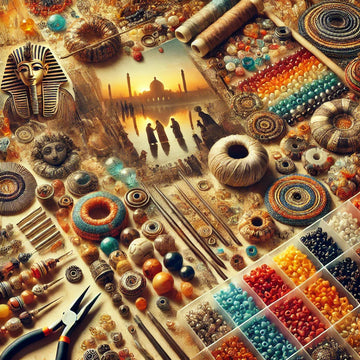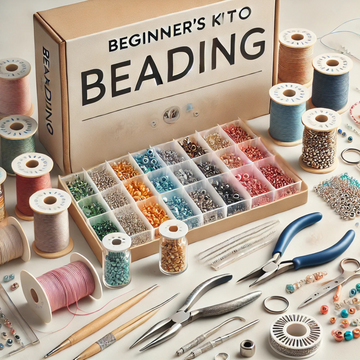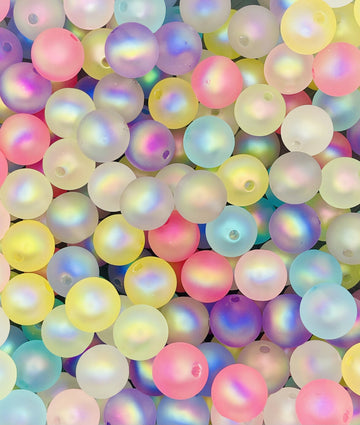
The History of Beads: From Ancient Times to Modern Crafts
Beads have been an integral part of human culture for thousands of years, symbolizing beauty, spirituality, status, and creativity. From ancient civilizations to today's vibrant crafting communities, the story of beads is as colorful and intricate as the beads themselves. Let’s take a journey through time and explore the fascinating evolution of beads across cultures and eras.
Beads in Ancient Times
The earliest beads date back over 100,000 years, made from natural materials such as bones, shells, seeds, and stones. Archaeologists have unearthed evidence of early humans using beads as personal adornments, spiritual symbols, and currency.
- Africa: Some of the oldest beads, made from ostrich eggshells, were discovered in Africa, reflecting the continent's rich artistic heritage.
- Mesopotamia: In the cradle of civilization, Mesopotamians crafted intricate beads from lapis lazuli and carnelian, using them to create elaborate jewelry and amulets.
- Egypt: Ancient Egyptians were master bead-makers, using faience, a glazed ceramic material, to create vibrant beads for necklaces, bracelets, and burial adornments.
The Role of Beads in Different Cultures
Beads played a significant role in many cultures, serving as status symbols, religious icons, and storytelling tools.
- Native American Tribes: Wampum beads, made from shell, were used as currency and to record agreements. Glass trade beads later became integral to Native American art and commerce.
- India and Southeast Asia: Beads of semi-precious stones, such as agate and jasper, were used in spiritual practices and as decorative ornaments.
- Europe: During the Renaissance, glass beads from Venice became highly sought after, with Murano becoming a global hub for bead-making.
The Bead Trade
The global trade of beads flourished between the 15th and 19th centuries. Glass beads, in particular, became a major commodity.
- Venetian Beads: Venice dominated the trade, producing colorful millefiori and seed beads that were exported worldwide.
- Trade Beads: Known as "slave beads," these were used as currency in the transatlantic slave trade, highlighting beads' historical complexity.
Beads in Modern Crafts
Today, beads are a beloved medium for self-expression and creativity, enjoyed by crafters, artisans, and designers worldwide.
- Materials and Innovation: Modern bead-making incorporates a vast array of materials, from glass and metal to acrylic and silicone. Techniques such as lampworking and resin casting have revolutionized bead design.
- DIY Culture: Beads are at the heart of DIY crafting, used to create everything from jewelry to home décor. Platforms like Pinterest and Etsy have inspired a new generation of bead enthusiasts.
- Cultural Revivals: Traditional beadwork is being celebrated and preserved, with artisans honoring their heritage through intricate bead designs.
Beads as Timeless Treasures
Beads have transcended time and geography, weaving their way through the tapestry of human history. They are more than just decorative objects—they are storytellers, symbols, and connections to the past.
Whether you’re creating a beaded bracelet, admiring ancient artifacts, or marveling at modern innovations, remember that beads carry a legacy of beauty and significance that stretches back thousands of years. They are a timeless art form that continues to inspire and connect us.
Are you a bead enthusiast? Explore our diverse collection of beads at The Beadhive and start crafting your own history today!



